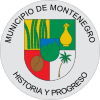Montenegro, Quindío facts for kids
Quick facts for kids
Montenegro, Quindío
|
|||
|---|---|---|---|
|
Municipality and town
|
|||

Saint Joseph of Montenegro Parish
|
|||
|
|||

Location of the municipality and town of Montenegro, Quindío in the Quindío Department of Colombia.
|
|||
| Country | |||
| Department | Quindío Department | ||
| Elevation | 1,294 m (4,245 ft) | ||
| Population
(2023)
|
|||
| • Total | 38,240 | ||
| Time zone | UTC-5 (Colombia Standard Time) | ||
Montenegro is a lively town and municipality in the western part of the Quindío Department in Colombia. It's about 10 kilometers (6 miles) west of Armenia, the capital city of the department. In 2023, about 38,240 people lived here.
Montenegro is famous for being in the heart of Colombia's coffee region. It's also home to the amazing National Coffee Park, a popular place for tourists.
Contents
Exploring Montenegro's Geography
The name "Montenegro" means "Black Mountain." It got this name because of the dark green trees that once covered a hill above the town. This dark hill stood out from the lighter green guadua bamboo forests around it. For a few years, between 1897 and 1904, the town was called Villa Quindío.
Natural Borders of Montenegro
Montenegro's borders are mostly formed by three rivers. The Roble River is to the north, separating it from Quimbaya. To the east and south, the Espejo River forms the boundary with Armenia and La Tebaida. The La Vieja River is to the west, marking the border with the nearby Valle del Cauca Department. There's also a small border with Circasia in the northeast.
The Coffee Cultural Landscape
Montenegro is right in the middle of the Colombian coffee growing axis. In 2011, the town center became part of a special UNESCO World Heritage Site called the "Coffee Cultural Landscape." This means the area's unique way of growing coffee and its beautiful scenery are protected and celebrated worldwide.
The rural areas around Montenegro look just like you'd expect a coffee zone to look. Many hotels and guesthouses have opened up, making it a great spot for a relaxing vacation. People come here to enjoy nature, learn about coffee farming, and experience the local culture.
Montenegro's Climate
Montenegro has a subtropical highland climate. This means it has mild temperatures all year round. The average temperature is about 21 °C (70 °F).
Fun Places to Visit
Montenegro is a popular spot for visitors, especially because of its famous coffee park.
- Coffee Park (Parque del Café): This huge park is a must-see! It has two main parts. Near the entrance, you'll find buildings with a museum and exhibits. These show you the history of coffee in Colombia and how it's grown and made. Further into the valley, there's an exciting amusement park with lots of rides and shows.
You can travel between the two parts of the park using two gondola lifts or a chairlift. If you prefer, you can also walk along a scenic path. This path goes through a plantation where you can see many different kinds of coffee bushes.
How Montenegro Started
The first people to settle in Montenegro in modern times were treasure hunters. They were looking for gold items in old burial sites of the native people. In the 1880s, over 1,500 people came to the area, some from as far away as the Antioquia Department.
Early Settlers and Founding
One of the very first settlers was María Antonia "Toñíta" Granada. She was a widow from Pácora, Caldas. In 1884, she built a house near the Roble River, which is now in the center of town. She is known as the first woman to be officially recognized as a founder of a town in Quindío.
Miguel Duque Betancourt bought the land for the town for 300 pesos. He bought it from Agapito Herrera, who was a judge in Salento. Miguel Duque and his parents had come to the area from Salamina, Caldas. They settled in a place that later became known as La Esmeralda.
Even though he was only 25 years old, Miguel Duque became the president of the town council. This council met for the first time on October 17, 1890. This date is now considered the official founding day of Montenegro.
Seven years later, on September 10, 1897, Montenegro was recognized as a small town (corregimiento) within the municipality of Filandia. It officially became its own separate municipality on April 6, 1911.
See also
 In Spanish: Montenegro (Quindío) para niños
In Spanish: Montenegro (Quindío) para niños





